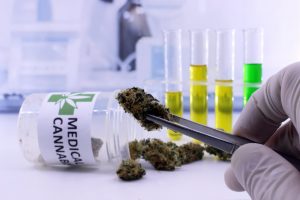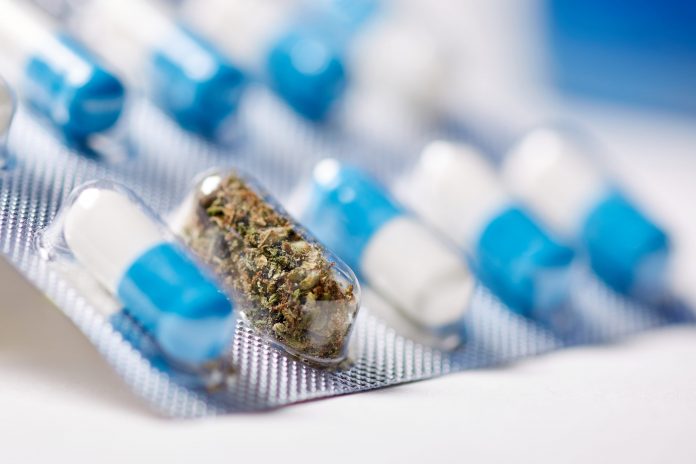Medicinal cannabis has been the subject of heated debate for years and with its use on the rise, this month we explore its role within healthcare and what pharmacists need to know.
While medicinal cannabis is controversial and its use within healthcare hotly debated, there is a lot more to the product than meets the eye.
Speak with the experts and you soon discover there might just be a place for medicinal cannabis – tetrahydrocannabinol (THC) and cannabidiol (CBD) – within mainstream Australian healthcare.
The topic that has interested both healthcare professionals and consumers alike for years – those with chronic conditions desperate to try something that ‘might just work’ for them yet experiencing significant barriers in accessing the so-called complementary drug; that includes both CBD and/or THC.

In Australia, “almost all medicinal cannabis is scheduled under the Special Access Scheme and thus can only be prescribed by a registered medical practitioner”, the Therapeutic Goods Administration (TGA) states.
“With the exception of one product (Nabiximols), medicinal cannabis products are not registered medicines in Australia, so they must be accessed through special pathways available for unapproved medicines … such access can only be arranged through an Australian-registered medical practitioner with appropriate qualifications and/or expertise for the medical condition requiring treatment,” the TGA continues.
“This doctor can notify/apply on the patient’s behalf for approval to import and supply these products through the Special Access Scheme (SAS Category A or B). Alternatively, the doctor can apply to us [the TGA] to become an Authorised Prescriber (AP).”[1]
In addition, some states and territories may have their own qualification criteria.
While currently THC (Schedule 8) and CBD (Schedule 4) both remain drugs that can only be prescribed through the SAS or an AP, access to low-dose CBD is being reviewed.
“It’s critical that pharmacists have the facts … a lot of the time people go to a pharmacist first [so] pharmacists need to play a key role [in this space],” says Pharmacy Guild Queensland Branch Vice-President Kos Sclavos, a passionate supporter of medicinal cannabis use in healthcare.
What is medicinal cannabis?
While the cannabis plant contains up to 100 cannabinoids, CBD and THC are typically those being referred to when we speak of medicinal cannabis.
CBD and THC both have therapeutic uses and differ based on their psychoactive effects. According to the TGA, “unlike THC, CBD does not cause psychomotor or cognitive impairment, or strong psychoactive effects”. [2]
THC is the cannabinoid “responsible for the psychoactive effects of cannabis and is the reason cannabis is used recreationally”. [3]
“Essentially, the difference between medicinal cannabis and illicit cannabis is one of quality assurance and the standardisation of cannabinoids, the former being an important aspect of safety,” says Justin Sinclair, research fellow at NICM Health Research Institute, Western Sydney University.

Dr Ben Jansen, Clinical Director of Cannabis Doctors Australia and CDA Health, adds: “When you say medicinal cannabis, it’s a broader term because it’s not just CBD by any means. We’re prescribing THC as well.
“About 40% of our prescriptions are CBD alone, the other 40% are THC alone and then 20% are blended products.
“Commonly we’ll prescribe a CBD and a THC so that a patient can adjust the dose of the CBD for their conditions that respond to the CBD, which will be different, in general, from what will respond to the THC.”
What conditions does medicinal cannabis manage?
Dr Jansen says the medical team at Cannabis Doctors Australia prescribe CBD and/or THC for a variety medical issues, including “neuropathic pain, inflammatory pain, degenerative pain, and beyond that, the next most common [condition] is anxiety”, which makes up “anywhere from 5-10% of prescriptions”.
Dr Jansen says medicinal cannabis is also prescribed for:
- Palliative care.
- Restless leg syndrome.
- Parkinson’s disease.
- PTSD.
- Ulcerative colitis.
- Migraines.
- Tremor.
- MS pain or spasms.
- Dystonia otherwise undiagnosed.
- Blood glucose control (“a couple of patients are on CBD for their diabetes”).
- Chemotherapy-induced nausea.
- Autism.
- Asperger’s syndrome.
- Mood disorder.
- Depression.
- ADHD.
- Schizophrenia.
- Epilepsy.
- Cystic fibrosis.
- Crohn’s disease.
- Other conditions.
The role of a pharmacist
While dispensing of medicinal cannabis is largely the domain of Approved Prescribers and doctors who have received approval through the SAS, given the potential change in low-dose CBD scheduling, all pharmacists may soon play a role within this arena, and will need to know how to dispense medicinal cannabis appropriately, and according to health conditions.
Mr Sclavos says all pharmacists will “need to step up”.
Dr Jansen says: “[At present] CBD is a Schedule 4; THC is a Schedule 8 – any product that has more than two per cent of any other cannabinoid apart from CBD is considered a Schedule 8 as well.”
“The government is looking to change the scheduling of smaller bottles of CBD to across-the-counter pharmacy only (Schedule 3) … so [if this goes ahead] pharmacists would have more of a role in dispensing CBD … [and] would need to give accurate advice,” says Dr Jansen, adding the need for pharmacists to upskill in this area.

“We do have pharmacists referring onto us and … we try to support our pharmacists as much as we can.
“There’s been a lot of red tape in preceding years for our pharmacists and [it’s been] really hard for them to get past a lot of that. So … we have released our new platform to try and help our pharmacists out, called CanView.”
To help pharmacists upskill, courses and platforms such as CanView are becoming available. Dr Jansen adds that through CanView, an educational platform will be released that pharmacists can access for further training around medicinal cannabis.
In addition to the option of the CanView platform, on 1 July NPS MedicineWise released a new portal to “help health professionals and consumers navigate evidence-based information about medicinal cannabis”.
For more information on the educational platforms, visit:
- CanView: canview.com.au
- NSP MedicineWise: nps.org.au/professionals/medicinal-cannabis-what-you-need-to-know
To read the full feature as it appears in this month’s issue of Retail Pharmacy magazine, visit: retailpharmacymagazine.com.au/magazine/ to subscribe to the magazine.
References:
- Guidance for the use of medicinal cannabis in Australia: Patient information, gov.au/publications/guidance-use-medicinal-cannabis-australia-patient-information [Accessed 1.7.2020].
- Review on the safety of low dose cannabidiol, gov.au/alert/review-safety-low-dose-cannabidiol [Accessed 2/7/20]
- Guidance for the use of medicinal cannabis in Australia: Patient information, gov.au/publications/guidance-use-medicinal-cannabis-australia-patient-information [Accessed 1/7/20].








